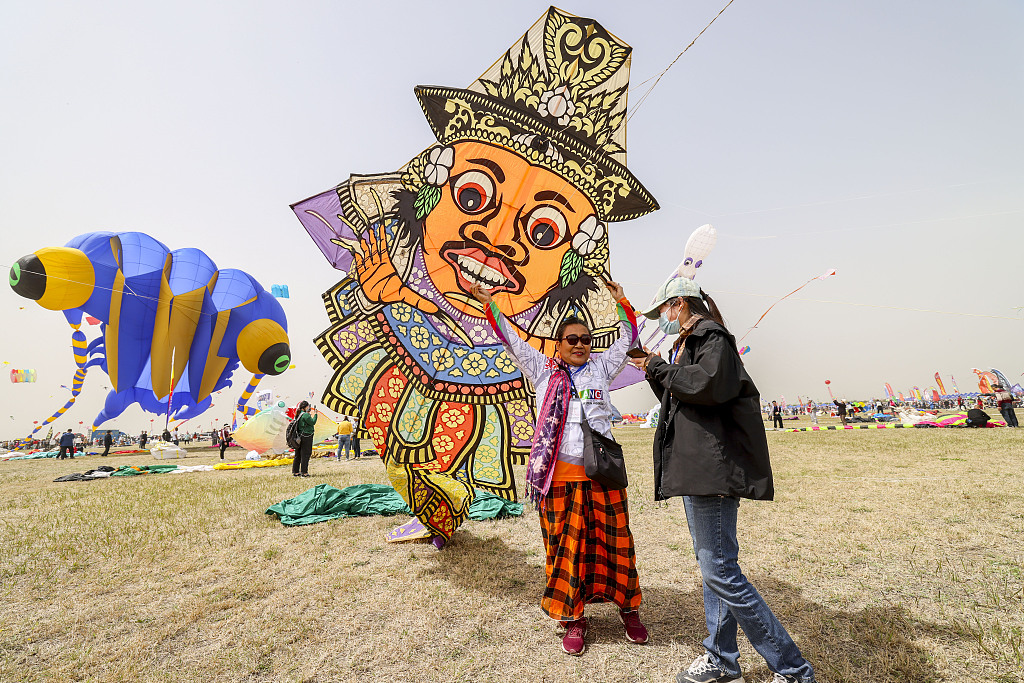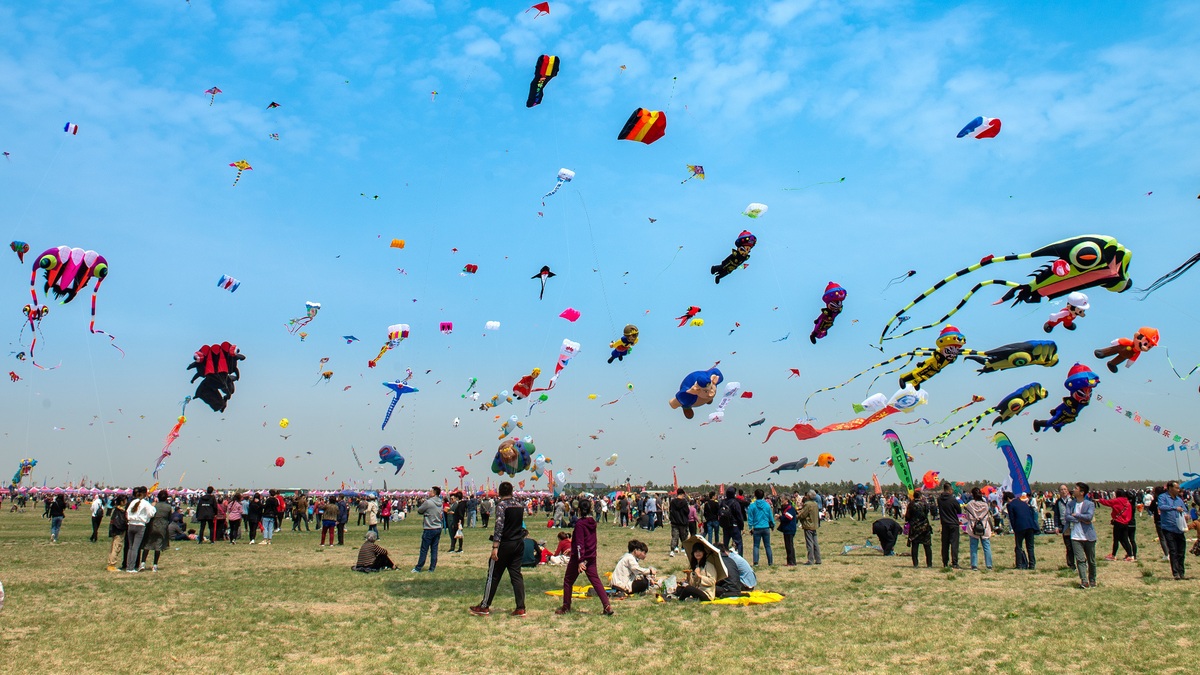Tracing Weifang’s Kite Culture and Historical Traditions
Imagine soaring kites dancing against the vast skies of Shandong province, each one a vibrant tapestry of history, artistry, and cultural symbolism. If you’re a traveler drawn to Weifang Kite Culture, you’re about to uncover a world where ancient traditions meet modern innovation. Weifang, often called the “World Capital of Kites,” is a treasure trove of Weifang cultural heritage that blends seamlessly with China’s rich tapestry of traditions. From the intricate designs that echo centuries of craftsmanship to the lively festivals that attract global enthusiasts, this destination offers an unforgettable glimpse into China kite history. Here at jusha.travel, we love sharing tips to make your China journey unforgettable, and this guide will help you dive deep into the cultural attractions Weifang has to offer, perfect for anyone planning a Weifang travel guide or seeking immersive China cultural tours.

### The Ancient Origins of Weifang Kite Culture
Weifang’s kite-making tradition stretches back over 2,000 years, making it a cornerstone of China kite history. Kites first emerged during the late Spring and Autumn Period and the Warring States Period (475–221 BC), with early inventors like philosopher Mozi creating simple wooden designs, such as a “wooden hawk,” to test flight principles. As detailed in historical accounts from sources like the Chinese Kite history page, these early kites evolved rapidly, thanks to innovators like Lu Ban, who swapped wood for bamboo to enhance durability and flight.
In Weifang, this evolution was fueled by local resources and ingenuity. Artisans began using bamboo frames and silk coverings, and the invention of paper during the Eastern Han Dynasty by Cai Lun revolutionized the craft, making kites more accessible and widespread. This period marked the shift from utilitarian tools—used for Ariel from military signaling to weather prediction—to cherished symbols of cultural expression. Today, visiting Weifang means stepping into this legacy, where you can see how Weifang Kite Culture has preserved these ancient techniques while adapting to modern times.
For travelers, a key tip is to visit during the spring months when winds are ideal for kite flying. If you’re on a China cultural tours, pack light clothing and a hat to enjoy outdoor activities comfortably. Weifang’s kite designs often incorporate elements of local folklore, like dragons and phoenixes, symbolizing good fortune and prosperity—making it a fantastic way to connect with Weifang cultural heritage.

### Weifang’s Cultural Significance and Symbolism
Delving deeper into Weifang cultural heritage, kites here are more than just playful objects; they embody the soul of the community. Weifang stands out as one of China’s four major historical kite schools, renowned for its elaborate artistry and symbolic depth. As explored in resources from the Weifang Kite Museum page, these kites often feature intricate paintings, such as the famous dragon-headed centipede design, which can include up to 100 hand-painted segments depicting children to represent longevity and family prosperity.
This cultural depth makes Weifang a must-visit for cultural attractions Weifang enthusiasts. The city’s kite-making is recognized as part of China’s intangible cultural heritage, with motifs drawn from local folklore and daily life. For instance, kites might simulate scenes from ancient legends or modern interpretations of prosperity, reflecting how Weifang Kite Culture has evolved while staying true to its roots. It’s a beautiful example of how Chinese traditions adapt, much like how food culture in China blends old recipes with new flavors—think of it as the kite equivalent of savoring Shandong’s famous braised dishes during your travels.
Practical advice for visitors: If you’re crafting your Weifang travel guide, consider joining a kite-making workshop at the Weifang World Kite Museum. These hands-on experiences not only teach you the basics of bamboo framing and silk painting but also offer insights into sustainable practices, such as using eco-friendly materials. Plus, it’s a great way to engage with locals, who might share stories of how kites were once used in festivals to ward off evil spirits—a tradition still alive in China cultural tours. Remember, Weifang’s kite festivals often coincide with clear skies, so check the weather app on your phone for the best viewing opportunities.

### Historical Uses and Modern Innovations in Kite Culture
From their origins, kites in Weifang played practical roles beyond entertainment. In early Chinese history, as noted in the History of Chinese Kites, they were used in military strategies during conflicts like the Chu-Han War, helping to transmit signals or even carry messages over enemy lines. This utilitarian aspect highlights the ingenuity of China kite history, where kites evolved from tools of war to symbols of peace and creativity.
In Weifang, this heritage continues to thrive through innovation, as discussed in contemporary studies like the research on Weifang Kite applications. Modern artisans are blending traditional designs with technology, such as LED lights for nighttime flights or durable synthetic materials that make kites more resilient to varying weather. This fusion mirrors China’s broader tech scene, where ancient customs meet cutting-edge advancements—like how QR codes on kites now provide interactive experiences for tourists.
For travelers on a Weifang travel guide adventure, attending the annual International Kite Festival is a highlight. This event, held in Weifang, draws participants from around the world and showcases Weifang Kite Culture at its finest, with competitions and displays that celebrate both historical and contemporary designs. A fun fact: Some kites can span over 100 meters, requiring teams to launch them—it’s a spectacle that combines culture with community spirit. If you’re exploring cultural attractions Weifang, pair your visit with local cuisine, like Shandong’s hearty soups, to fuel your day of exploration.

### Preserving Traditions and Practical Travel Tips
As we wrap up our exploration of Weifang Kite Culture, it’s essential to discuss how this heritage is being preserved for future generations. Masters like Yang Hongwei, a national-level inheritor, are key figures in teaching these skills, ensuring that Weifang cultural heritage remains vibrant. Through initiatives supported by institutions like the International Kite Federation, founded in Weifang, the city is not just preserving history but innovating it for global audiences.
For those planning China cultural tours, here are some practical tips to enhance your experience:
–
- Timing your visit: Aim for April or May to catch the kite festival, but book accommodations early as spots fill up quickly.
- Getting around: Use high-speed trains from Beijing or Qingdao for easy access; once in Weifang, rent a bike to explore kite-making villages.
- Cultural etiquette: Respect local customs by participating in kite-flying ceremonies, and try to learn a few phrases in Mandarin to connect with artisans.
- Health and tech tips: Download a translation app for navigating markets, and bring sunscreen for outdoor events—China’s varying climates can surprise newcomers.
Weifang’s kite culture exemplifies how China kite history inspires and guides visitors, blending the old with the new in a way that’s both educational and fun.
In conclusion, tracing Weifang’s Kite Culture and Historical Traditions reveals a captivating blend of artistry, history, and innovation that enriches any cultural attractions Weifang itinerary. From the ancient origins to modern festivals, this destination offers profound insights into Weifang cultural heritage and China cultural tours, reminding us of the joy in preserving traditions while embracing the future. Here at jusha.travel, we’re passionate about helping you discover these hidden gems, so whether you’re a seasoned traveler or a curious explorer, we encourage you to share your thoughts in the comments below, visit jusha.travel for more inspiring China travel guides, or check out our related articles on other cultural wonders. Your next adventure awaits—let’s take flight together!

